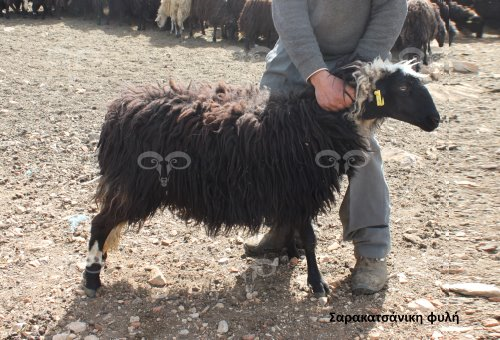History
The Sarakatsaniko is a very old breed identified with the nomadic lifestyle of the Sarakatsans, a group of Greek pastoralists who traditionally moved throughout the Balkans. The Sarakatsans’ transhumancing patterns included spending winters in the plains of Thessaly, Thrace and Macedonia and summers in the corresponding mountain ranges. Until the 1960s the breed of Sarakatsaniko sheep was numerous and widely distributed. It is excellently adapted to the nomadic lifestyle which included travelling on foot for numerous days over steep, rocky terrain often under harsh climatic conditions. Utilizing these rugged sheep in intensive or semi-intensive farming was unprofitable and by the middle of the 20th century, they were replaced by other breeds. Nomadic livestock keeping is gradually disappearing from the Balkans. With it traditions and breeds associated with this difficult and demanding lifestyle have been lost. There are still some pure herds of the breed in the Rodope, Thessaly and Epirus regions. Scattered specimens with features of Sarakatsaniko sheep are found in many populations throughout Greece.
Morphological Traits
The Sarakatsaniko breed is small-sized, coarse-woolled and thin-tailed. Average weight and height at the withers for rams are 69 kg and 65 cm and for ewes’ 41 kg and 54 cm.


Rams normally have large, strong horns, spiraling around the ears. Ewes are usually polled. The head is conical, relatively large with ears of medium size carried to the sides and semi-pendulous. The chest is deep and wide. The limbs are short, strong and husky. The belly is rounded and spacious. The tail is low set, of medium length and rather wide for a thin-tailed sheep.
The wool has plenty of long-coarse hair, covers the entire body and forms a forelock. The face and the limbs are clear of wool. Originally, the colour was said to be white. For sentimental reasons, during Ottoman rule there was a preference for black. As a result, for a long period, the breed was represented by black specimens. Nowadays, the most frequent pattern consists of a white body with black or gray markings on the face and limbs.
Population
According to the Centres of Animal Genetics Resources data (2019), the total population of the Sarakatsaniko breed is approximately 10,500 animals. The breed is classified as ‘Not at Risk’.


